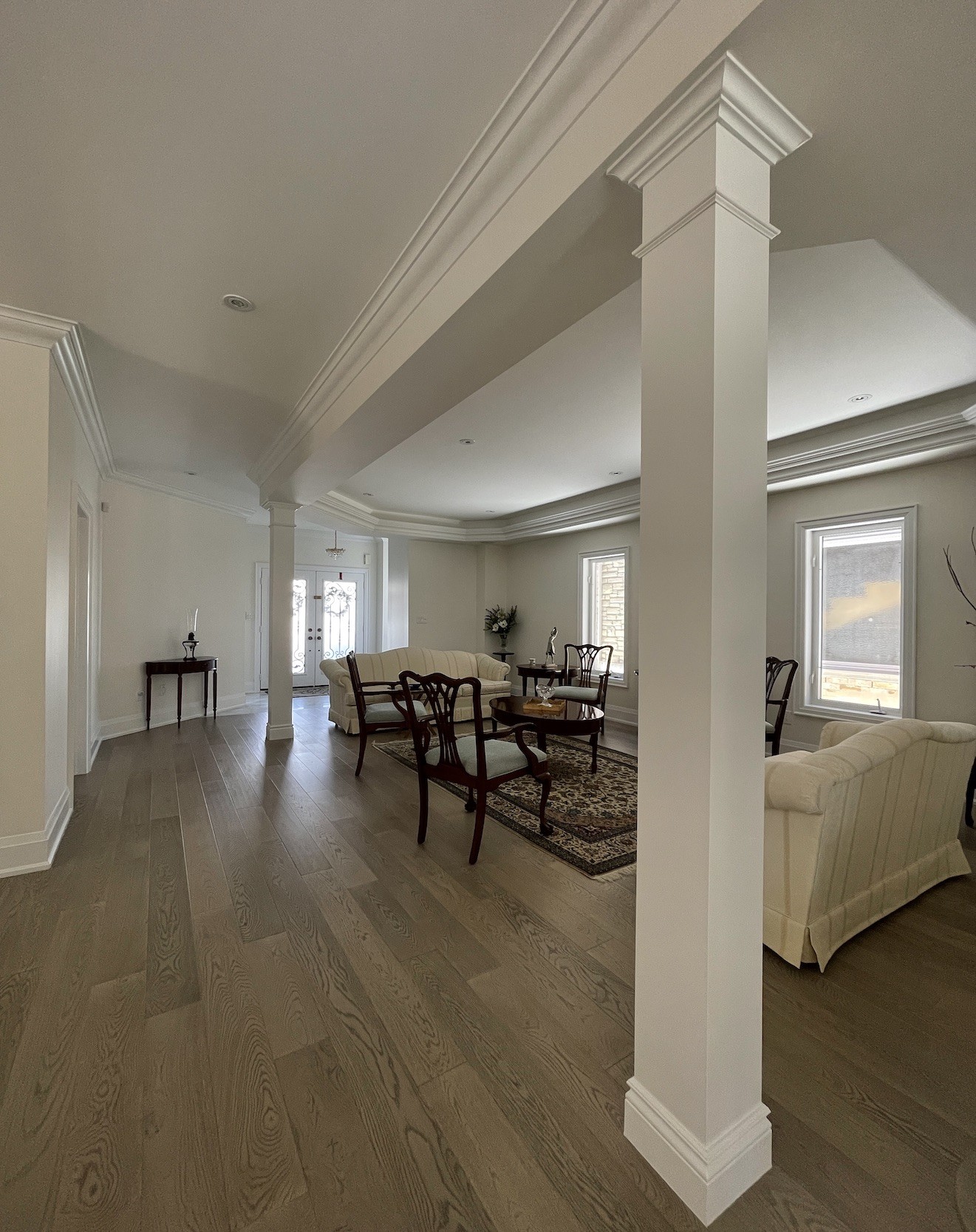Decorative columns have the remarkable ability to transform any interior space, imbuing it with elegance, sophistication, and a touch of timeless charm. As someone who has dabbled in various aspects of interior design, I can tell you that the right columns can serve not only as a functional support element but also as stunning focal points. Let’s explore the world of decorative columns, their styles, materials, and how you can use them to enhance your home.
Understanding Decorative Columns
Decorative columns are vertical structures that serve as both architectural support and aesthetic features in a room. Unlike load-bearing columns, decorative ones are often crafted to elevate the overall visual appeal of a space.
The Functionality of Decorative Columns
- Support Structures: While primarily decorative, some may still offer support.
- Space Definition: Columns can help delineate spaces, especially in open floor plans.
- Aesthetic Appeal: They add style and elegance to both modern and traditional designs.

History of Decorative Columns
Columns have a rich history in architecture, dating back to ancient civilizations, notably the Greeks and Romans. Each column style reflects the culture and aesthetic preferences of its time:

- Doric: The simplest and most sturdy, often used in robust structures.
- Ionian: Characterized by scroll-like volutes, adding a sophisticated touch.
- Corinthian: The most ornate, adorned with acanthus leaves, showcasing luxury.
Types of Decorative Columns

When it comes to decorative columns, there are various styles to choose from, each offering unique aesthetics and functionalities. Here’s a comparative look at some popular types:
| Column Type | Style Characteristics | Best Suited For |
|---|---|---|
| Doric | Simple, stout, fluted design | Modern, minimalistic settings |
| Ionian | Elegantly curved volutes | Classic interiors, libraries, and study rooms |
| Corinthian | Ornate detailing with decorative leaves | Luxury homes, ballrooms, and formal spaces |
| Modern | Sleek lines, often made of metal or glass | Contemporary designs, lofts, and offices |

Choosing the Right Material for Your Decorative Columns
The material of your decorative columns plays a significant role in the overall look and feel of your space. Here are some popular options, along with their pros and cons:

Wooden Columns
- Pros: Warmth, versatility, and can be painted or stained.
- Cons: Prone to warping and requires maintenance.

Fiberglass Columns
- Pros: Durable, lightweight, and resistant to weather.
- Cons: Can look less authentic than wood or stone.

Stone and Marble Columns
- Pros: Timeless elegance, very durable, and adds significant weight to a design.
- Cons: Higher cost and challenging to install.
Metal Columns
- Pros: Sleek modern look, durable, and unique.
- Cons: Can seem cold or industrial in certain settings.
Incorporating Decorative Columns in Your Home
In my personal experience, integrating decorative columns into your home can be both exciting and daunting. Here are some practical tips on how to do it cohesively:
1. Define the Purpose
Before making a decision, think about what you want to achieve with the columns. Are they purely decorative, or will they serve a functional purpose? This will guide your choice of style and material.
2. Consider Scale and Proportion
Ensure that the columns are proportionate to the space. In a large room, thicker or taller columns can create a strong presence, while slimmer columns work better in smaller areas.
3. Placement Matters
Think strategically about where to place columns. They can be utilized at entryways, in living rooms to delineate spaces, or even in dining areas to create intimacy.
4. Use Lighting to Enhance Columns
Lighting can highlight the beauty of your columns. Consider installing spotlights or wall sconces that focus light on the columns to draw the eye.
5. Pairing with Other Elements
Decorative columns can be beautifully complemented with other elements such as archways, beams, or even artwork. This layering can add depth and interest to the design.
Styling Ideas for Decorative Columns
Here are some creative styling ideas that I’ve found effective:
Traditional Elegance
Opt for ornate Corinthian columns in a classic white hue, paired with rich, dark woods in the furniture.
Modern Minimalism
Choose sleek, metal columns and keep the furnishings simple and angular for a cohesive modern look.
Rustic Charm
Wooden columns with a distressed finish can add warmth and texture to a country-style interior.
Common Mistakes to Avoid
Like any design element, decorative columns can be misused. Here are a few common mistakes to steer clear of:
- Overcrowding: Too many columns can overwhelm a space.
- Inconsistent Styles: Ensure that the columns align with the overall design language of your home.
- Neglecting Maintenance: Regular upkeep is essential, especially for wooden columns.
Frequently Asked Questions (FAQs)
What are the benefits of decorative columns in interior design?
Decorative columns enhance visual interest, help define spaces, and can even be used as focal points in a room.
Can decorative columns be used in small spaces?
Yes, but it’s essential to choose slim profiles that won’t overpower the room. Using lighter colors can help create an illusion of more space.
What styles of columns are currently trending?
Modern and minimalist styles are gaining popularity, with more homeowners opting for sleek finishes and unconventional materials.
How can I maintain my decorative columns?
Regular dusting and cleaning is important. Wood columns may need refinishing, while stone columns may require sealing to protect from stains.
Are decorative columns expensive?
The cost varies based on material and size. Fiberglass can be a more budget-friendly option, while custom stone columns can be quite expensive.
Conclusion
Decorative columns can be the perfect way to elevate your interior design, adding a blend of functionality and aesthetic appeal. Whether you prefer the timeless beauty of wood or the sleekness of metal, there’s a style that can suit your space. Remember that the key to successfully integrating columns lies in understanding their purpose and harmonizing them with the overall design of your home. Happy decorating!